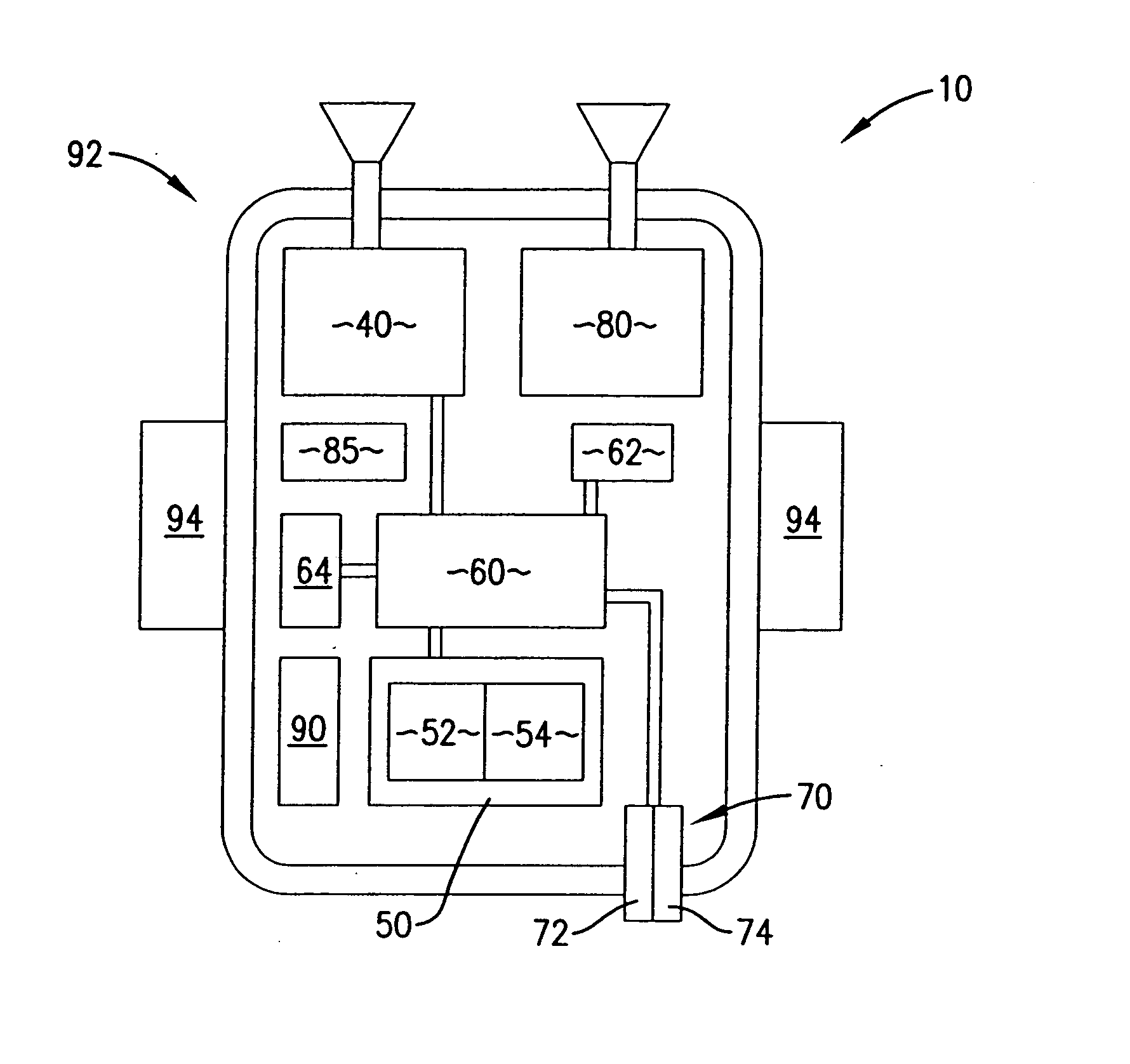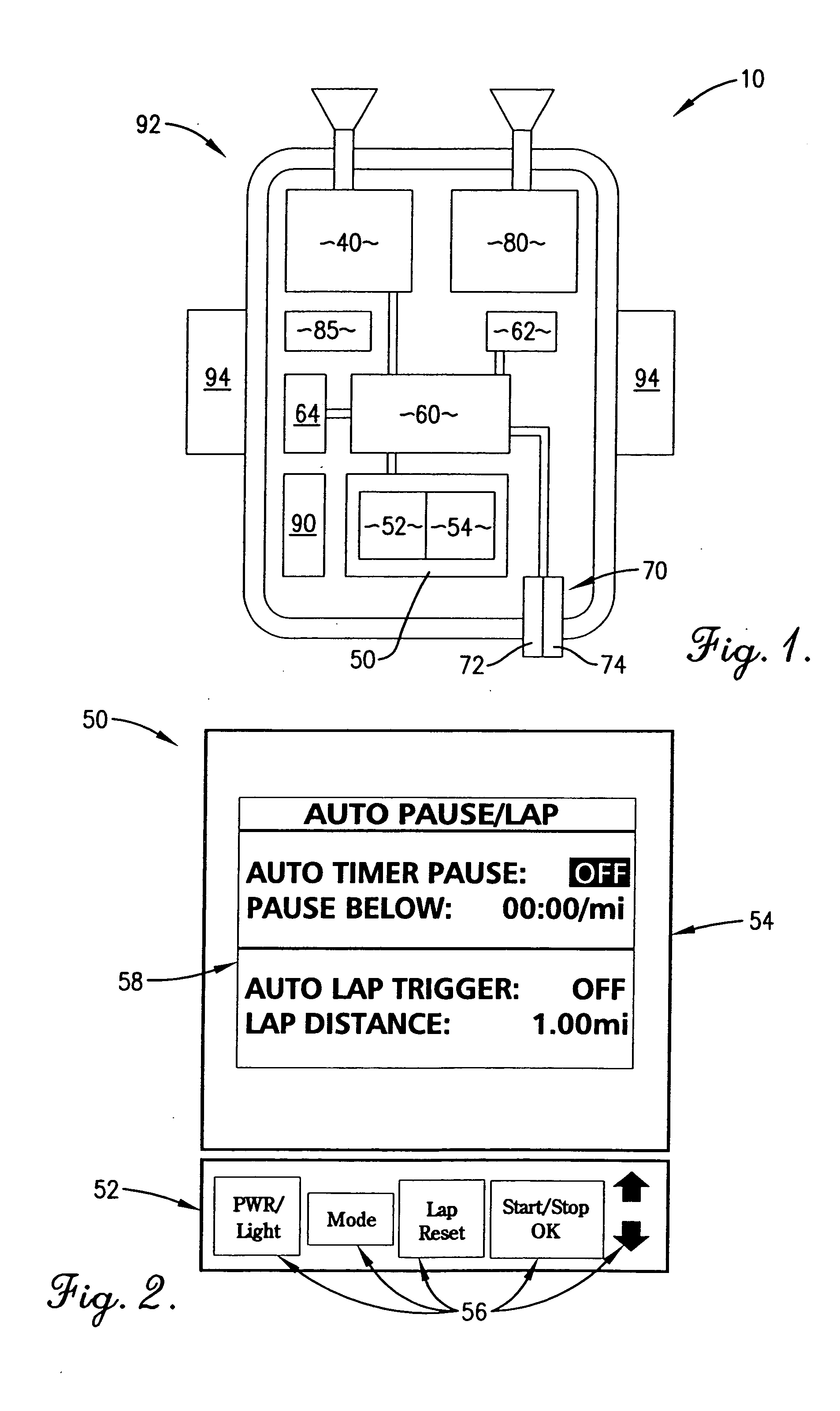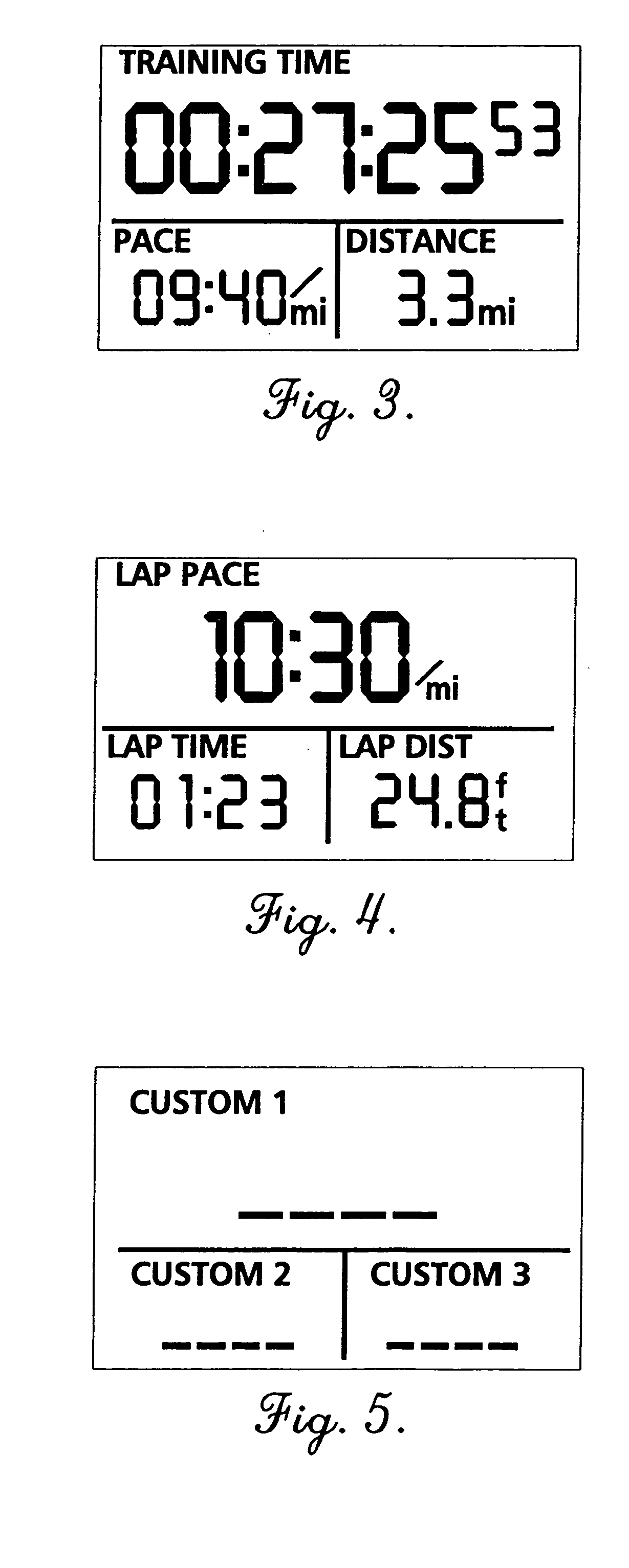Personal training device using GPS data
a technology of personal training and gps data, applied in the field of personal training devices using gps data, can solve the problems of improper calibration, significant inaccurateness, pedometer suffering, etc., and achieve the effect of flexible and flexible user movemen
- Summary
- Abstract
- Description
- Claims
- Application Information
AI Technical Summary
Benefits of technology
Problems solved by technology
Method used
Image
Examples
Embodiment Construction
, below.
BRIEF DESCRIPTION OF THE DRAWINGS
[0020] Preferred embodiments of the present invention are disclosed in detail below with reference to the attached drawing figures, wherein:
[0021]FIG. 1 is a schematic of components in a preferred embodiment of the personal training device of the present invention;
[0022]FIG. 2 is a plan view of an interface component of the device of FIG. 1;
[0023]FIG. 3 is a depiction of a first visual graphic performance indicator adapted for use in completing a first task of assisting a user to reach performance goals;
[0024]FIG. 4 is a depiction of a second visual graphic performance indicator adapted for use in completing a first task of assisting a user to reach performance goals;
[0025]FIG. 5 is a depiction of a third visual graphic performance indicator adapted for use in completing a first task of assisting a user to reach performance goals;
[0026]FIG. 6 is a flowchart of steps involved in completing a first task of assisting a user to reach perfo...
PUM
 Login to View More
Login to View More Abstract
Description
Claims
Application Information
 Login to View More
Login to View More - R&D
- Intellectual Property
- Life Sciences
- Materials
- Tech Scout
- Unparalleled Data Quality
- Higher Quality Content
- 60% Fewer Hallucinations
Browse by: Latest US Patents, China's latest patents, Technical Efficacy Thesaurus, Application Domain, Technology Topic, Popular Technical Reports.
© 2025 PatSnap. All rights reserved.Legal|Privacy policy|Modern Slavery Act Transparency Statement|Sitemap|About US| Contact US: help@patsnap.com



